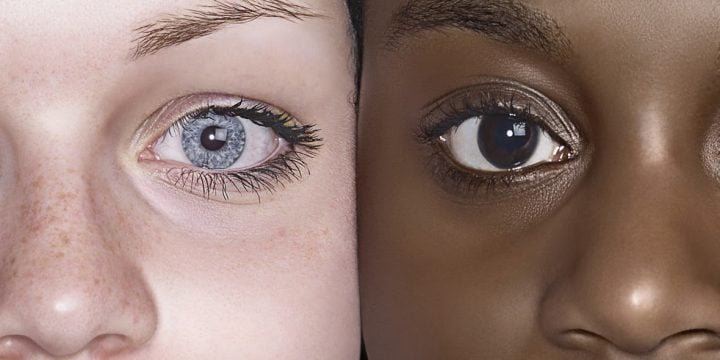Implicit Bias Playlist: Why our Prejudices Keep Singing the Same Songs
 One sunshiney Florida day, my family took a ride in our speedboat. The boat’s construction placed the passengers in the bow and the driver in the back. I’d jumped into the driver’s seat at the beginning of the ride, but later handed the wheel over to my brother. The family, looking out at beautiful scenery, didn’t know that he was now driving. While returning home, he briefly ran amock on the shore of the channel that led to our dock. Family members wheeled around to reprimand me: “Jenny!–” they cried, ready to scold me. Then they saw my brother, simultaneously expressed relief, and turned back around.
One sunshiney Florida day, my family took a ride in our speedboat. The boat’s construction placed the passengers in the bow and the driver in the back. I’d jumped into the driver’s seat at the beginning of the ride, but later handed the wheel over to my brother. The family, looking out at beautiful scenery, didn’t know that he was now driving. While returning home, he briefly ran amock on the shore of the channel that led to our dock. Family members wheeled around to reprimand me: “Jenny!–” they cried, ready to scold me. Then they saw my brother, simultaneously expressed relief, and turned back around.
The unconscious assumption that my male brother was a safer driver drove my family’s ever-so-subtle alarm response. We call these assumptions implicit bias because they brew under the surface rather than being explicitly stated. Unfortunately, their slippery, shadowy nature makes them difficult to address.
Let me give a few examples of implicit bias: A white hand holding an iPod in an eBay ad received 21 percent more offers than a black hand.1 A Duke University study found that 80 percent of elder respondents reported being ignored or not taken seriously because of their age.2T he famous Goldberg Study showed that when a man’s name appeared on an essay, both men and women tended to give it a higher rating, even though it was the same essay as the one with the woman’s name.3 I’ve plucked these examples from a literal trove of studies and anecdotes revealing how deep the tentacles of bias penetrate the human psyche.
This is big stuff. Our isms, whether racism, ageism, sexism, or any other form of discrimination, survive and outlive laws, movements, and even our own best intentions. White people can rant all day long about the latest episode of police brutality against a black man, and still choose all white friends. We may say we believe the elderly can make a contribution, but then consistently exclude them from our social circles. Men can campaign for women in leadership and subconsciously disdain intelligent, experienced women for being too un-sexy.
Sometimes we even engage in sublimation—the masking of shameful inner drives through the use of compensatory outward behaviors. Think Ted Haggard ranting against homosexuality while enjoying a fling with a male prostitute. Since then this homophobia/homoeroticism complex has been dubbed “Haggard’s Law” and scientifically demonstrated to be real. This isn’t to belittle Haggard or guilt people out of honest moral convictions. It’s to admit our sinfully split personalities. Like pious Pharisees we fight the shame effect of the evil within by resorting to externalized righteousness. And most shockingly of all, we remain completely unaware of it.
So, the million dollar question is . . . how do we change?
The first step toward transformation is self-knowledge. Studies reveal that systematic self-reflection and education can combat biases in the workplace.4 As squeamish as we may feel, shining a light on our blind spots can help clear out the by dark little lies. I recommend taking an implicit bias test such as can be found at Implicit.Harvard.edu. Be forewarned, though. Like paparazzi of the subconscious, these tests will shatter your self-image as you find out you’re uglier than you thought you were.
Another must is challenging our biases. This can take the form of exposure to people or the contexts in which we see them. Let me share an honest testimony here: I was raised in an all-white world and pretty much conditioned to think of black males as more violent and dangerous than white males. Yet I’ve known, loved and befriended so many kind, polite, respectful black males that honestly don’t feel that way. I’ve observed many black parents’ training their sons to be respectful and courteous. As a result I tend to assume the opposite of my previous conditioning. I challenged my biases through exposure and it has paid off.
I believe God calls the church to facilitate this journey of self-awareness and self-challenging. In it, God creates a safe place where we can face our worst selves and know there is forgiveness and grace. Not only that, but we can challenge our biases as we gather with people of all demographics in a place of common faith.
And beyond even these benefits, God promises His Spirit, which “searches all things” (1 Cor. 2:10) and transforms us into the image of the Lord (2 Cor. 3:18). He will soon pour out that Spirit in the latter rain in preparation for Jesus’ soon coming. Are we willing? Are we ready?
- “Racial Bias, Even When We Have Good Intentions,” Jan. 3, 2015 ↩
- “Elder Stereotypes in Media & Popular Culture,” by Jessica Walker, Aging Watch Blog, Accessed October 11, 2017 ↩
- “Goldberg revisited: What’s in an author’s name. Sex Roles” by Antoinette Paludi, Michele & D. Bauer, William. (1983) ↩
- See “The effectiveness of three strategies to reduce the influence of bias in evaluations of female leaders,” by Amanda J. Anderson et al, Journal of Applied Social Psychology, Sep 2015, Also “Are You Biased against Women Leaders?” by Kevin Miller, February 10, 2016, at AAUW.org. Accessed October 11, 2017 ↩
